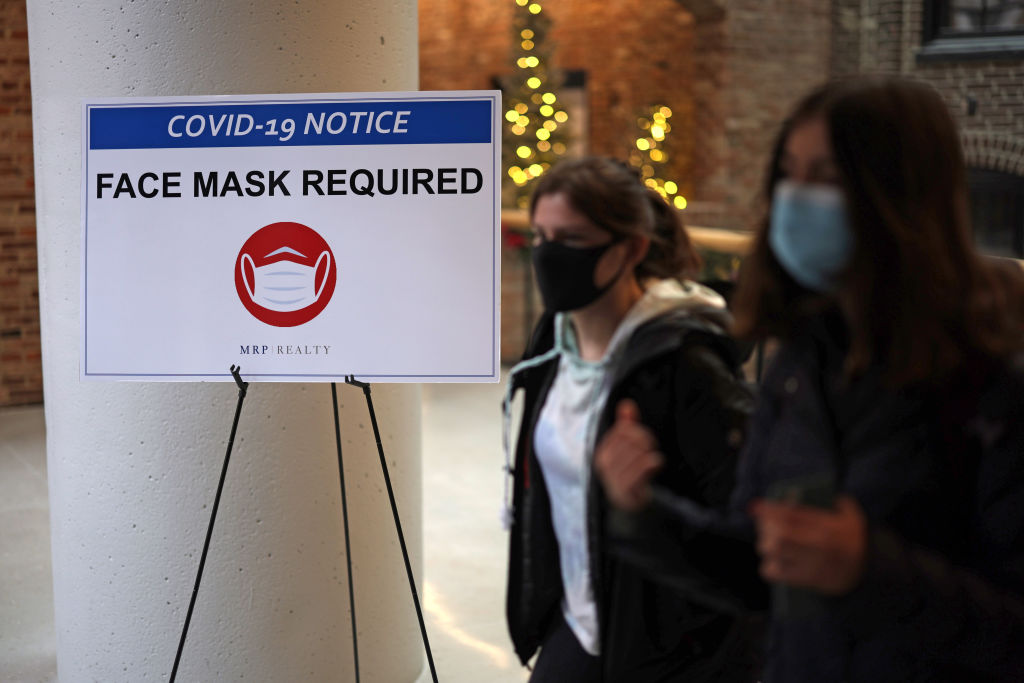
As of today, the U.S. Centers for Disease Control and Prevention (CDC) no longer advises mask-wearing in public indoor spaces for most Americans.
Using a new method to determine community risk, more than half of U.S. counties—home to about 70% of the nation’s population—do not currently meet the threshold for recommended universal indoor masking, CDC officials said during a press briefing today. (You can search your county’s COVID-19 risk level here.)
“With widespread population immunity, the overall risk of severe disease is now, generally, lower,” CDC Director Dr. Rochelle Walensky said during the briefing. The CDC is now focused on preventing severe disease and health care strain, she said, instead of solely stopping new infections. The agency now determines an area’s risk based on its hospitalization rates, health care capacity, and the rate of new cases, instead of just case numbers and test positivity rates.
Universal indoor masking is now recommended only for counties that are deemed high risk based on these metrics. Schools can follow the same guidance as the wider community, CDC officials said. (Of course, people may choose to wear masks if they wish, and the CDC advises everyone with COVID-19 symptoms to wear a mask. The CDC also urges Americans to stay up-to-date on their COVID-19 vaccinations regardless of their community’s risk level.)
The masking advice does not apply to airplanes, trains, and transit centers, where masking is still required by a national mandate through at least March 18.
The change comes just weeks after Walensky said, on Feb. 9, that it was too soon to alter the agency’s mask guidelines given high rates of infection and death, even though some states were ending mandates. Case counts have fallen dramatically since then, dropping from an average of more than 210,000 diagnoses per day to about 75,000 per day as of Feb. 23. Average deaths have also fallen from about 2,500 to roughly 1,500 per day since Feb. 9.
The CDC drew widespread criticism in May 2021, when it said vaccinated people in the U.S. no longer needed to wear masks indoors. Many experts called that move premature; indeed, it came shortly before the Delta variant caused cases and hospitalizations to surge over the summer. Omicron caused an even larger spike in cases a few months later.
The latest shift in guidance is also sure to be controversial, pitting those who feel it’s time to live with COVID-19 against those who argue it’s too soon to abandon pandemic precautions, given that tens of thousands of people are still infected by the virus every day and vaccines are not yet authorized for the nation’s youngest children. Which side is correct remains to be seen—but during the press briefing, Walensky acknowledged that guidance could change in the future.
“We want to give people a break from things like mask-wearing when our levels are low, and then have the ability to reach for them again should things get worse in the future,” she said.
More Must-Reads from TIME
- Cybersecurity Experts Are Sounding the Alarm on DOGE
- Meet the 2025 Women of the Year
- The Harsh Truth About Disability Inclusion
- Why Do More Young Adults Have Cancer?
- Colman Domingo Leads With Radical Love
- How to Get Better at Doing Things Alone
- Michelle Zauner Stares Down the Darkness
Write to Jamie Ducharme at jamie.ducharme@time.com